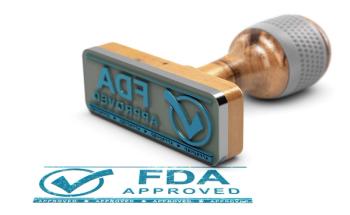
Virtual Reality and Biofeedback Training Appear Effective for DMD, BMD Rehabilitation
A recent study suggests virtual reality and biofeedback training may be feasible and effective for patients with Duchenne muscular dystrophy (DMD) and Becker muscular dystrophy (BMD).
Virtual reality (VR) and biofeedback have been shown effective for rehabilitation in various populations, and a recent study suggests they may be feasible and effective for patients with Duchenne muscular dystrophy (DMD) and Becker muscular dystrophy (BMD). The findings were published in the journal
For patients with muscular dystrophy, physical therapy to exercise and stretch the muscles is recommended to prevent contractures and promote flexibility.2 While VR and biofeedback have been found effective across a range of populations, their utility in rehabilitation for patients with DMD and BMD is not as well understood, the authors explained.1
The study aimed to determine if VR could be an effective strategy for rehabilitation in DMD and BMD, as well as compare the effectiveness of VR and biofeedback training in this patient population. A total of 25 patients were included, 19 of whom had DMD and 6 who had BMD.
The control group (n = 8) continued with the physical therapy and rehabilitation program they were receiving, which included stretching exercises, bridging, sit-ups, functional activities, and balance exercises. Conventional rehabilitation was done for 45-minute sessions on 2 days each week for 12 weeks.
The VR group (n = 9) used the X-Box 360 Kinect game console to play goal-oriented games 3 days per week. These activities included rhythmic upper and lower extremity movements, walking, running, and reaching, but did not include eccentric muscle contractions and jumping movements.
In the EMG biofeedback group (n = 8), the Enraf Nonius Myomed 632X device was used to train patients’ quadriceps femoris (QF), tibialis anterior (TA), and the middle part of the deltoids. These muscle groups were chosen following a literature review that determined QF and TA weakness are main factors in gait impairment, and the ability to combine the arms overhead with abduction is point of emphasis in functional assessments for this patient population.
At baseline, week 6, and after the rehabilitation program was completed, a physical therapist who did not know each participant’s intervention group assessed patients for several outcome measures. These included:
- muscle pain, cramps, perceived exercise intensity, and laboratory assessments
- muscle strength in upper and lower extremities, tested with a hand-held dynamometer
- timed performance tests, including timed-up-and-go test, stair climbing test, T-shirt donning and doffing test, and standing up from supine position tests
- functional level, with upper- and lower-extremity function classified with Vignos Scale and Brooke Scale and overall functional level classified by the Motor Function Measurement-32
- balance ability, which was evaluated with the Balance Master Balance System and the Pediatric Functional Reach Test
- motivation for rehabilitation based on the Pediatric Motivation Scale
The median ages in the VR, biofeedback, and control groups were 9 years, 8.75 years, and 7 years, respectively. In pretreatment assessments, the groups showed no significant differences in most outcome measures, except tandem step width. Demographics, clinical findings, and laboratory findings were not significantly different between groups.
Patients who received the VR and biofeedback interventions had improved pain intensity, cramp frequency, cramp severity, muscle strength, timed performance, functional level, and balance compared with those in the conventional rehabilitation group (P < .05). In the standard rehabilitation group, patients maintained their statuses without significant changes.
VR and biofeedback were found equally effective across most measures, although patients receiving VR interventions maintained their motivation for rehabilitation longer (P < .05). The authors noted that low motivation levels may limit the long-term efficacy of biofeedback, but combining it with other methods such as VR may help.
The study was limited by its small size, which may limit its generalizability. The inclusion of patients with both DMD and BMD is another limitation, and the authors noted that separate studies focused solely on children diagnosed with DMD or BMD would provide more robust evidence.
“Based on this study, VR appears to be a safe, feasible, and well-tolerated addition to DMD and BMD rehabilitation that may facilitate positive outcomes,” the authors concluded. “The use of VR and biofeedback for rehabilitation in children with DMD and BMD yielded positive outcomes in muscle strength, timed performance, functional level, and balance, without any adverse effects. Continuing conventional rehabilitation helped maintain these functions or slow regression.”
References
1. Kurt-Aydin M, Savaş-Kalender D, Tarsuslu T, Yis U. Feasibility of virtual reality and comparison of its effectiveness to biofeedback in children with Duchenne and Becker muscular dystrophies. Muscle Nerve. Published online April 1, 2024. doi:10.1002/mus.28084
2. Therapy for muscular dystrophy. NYU Langone Health. Accessed April 29, 2024. https://nyulangone.org/conditions/muscular-dystrophy/treatments/therapy-for-muscular-dystrophy
Newsletter
Stay ahead of policy, cost, and value—subscribe to AJMC for expert insights at the intersection of clinical care and health economics.







































